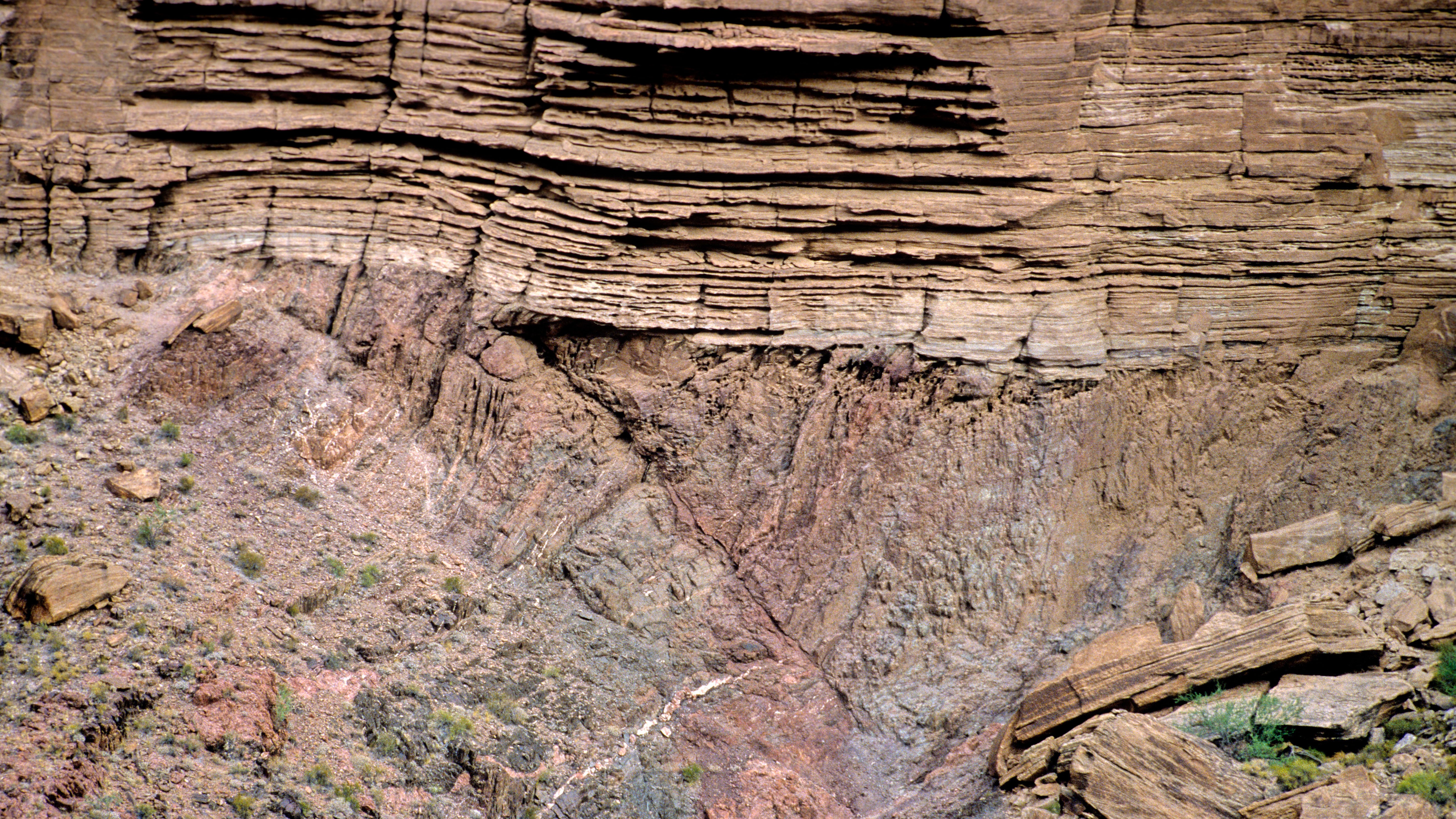Mystery of Grand Canyon's missing rocks may finally be solved
The ancient supercontinent Rodinia may be responsible.

A mystery lies deep within the Grand Canyon: one billion years' worth of rocks have disappeared. This "Great Unconformity" has rocked the scientific community since it was first described almost 150 years ago.
"Think of the red bluffs and cliffs of the Grand Canyon as Earth's history textbook," Barra Peak, a geologist from the University of Colorado, Boulder, said in a statement. "If you scale down the canyon's rock faces, you can jump back almost 2 billion years into the planet's past. But that textbook is also missing pages: In some areas, more than 1 billion years' worth of rocks have disappeared from the Grand Canyon without a trace."
In a new study, researchers led by Peak identify a likely cause for the missing rocks: the breakup of Earth's ancient supercontinent Rodinia approximately 700 million years ago. The upheaval was so violent it likely washed rocks and sediment into the ocean — one billion year's worth, in the case of the Grand Canyon.
Related: Earth once swallowed its own superocean. Could it happen again?
The Great Unconformity was first described by John Wesley Powell during a boat expedition in 1869 along the Colorado River, which carved Arizona's Grand Canyon. It was one of the first well-documented puzzling geologic features in North America, according to researchers.
Peak and her team completed an expedition like Powell's in spring 2021 and were greeted with the same stark boundary between Grand Canyon rock layers, which could be seen from the river. At particular sites along the canyon, 1.4 to 1.8-billion-year-old rocks are found lying beneath much younger 520-million-year-old rocks, according to the researchers.
"There are beautiful lines," Peak said. "At the bottom, you can see very clearly that there are rocks that have been pushed together. Their layers are vertical. Then there's a cutoff, and above that you have these beautiful horizontal layers that form the buttes and peaks that you associate with the Grand Canyon."
Get the Space.com Newsletter
Breaking space news, the latest updates on rocket launches, skywatching events and more!

Peak and her team used a method called thermochronology to track the history of rock heating in order to peer deep into the geological history of the Grand Canyon.
When rocks are buried deep underground, the immense pressure building on top of them causes the rocks to heat up. This toasting, in turn, leaves a chemical "footprint" of minerals behind in the rock that reveal clues about the history of the heating.
Peak and her team analyzed samples of rocks throughout the Grand Canyon and discovered the history of the Great Unconformity may be more complicated than first assumed. The researchers suggest that the eastern and western halves of the canyon may have undergone different geological contortions throughout time.
"It's not a single block with the same temperature history," said Peak.
According to the researchers, a series of small faulting events occurred when Rodinia — the supercontinent that preceded the more-famous Pangea — broke apart approximately 700 million years ago. The violent faulting likely tore up land around the canyon, causing rocks and sediment to wash away into the ocean.
Whilst basement rock in the western half of the Grand Canyon seems to have risen to the surface roughly 700 million years ago, the same stone in the eastern half is buried under kilometers of sediment. The researchers suggest that the upheaval may have torn at the eastern and western halves of the Grand Canyon in different ways and at slightly different times, creating the Great Unconformity in the process.
The team's findings are helping piece together what happened during this critical period for the Grand Canyon as well as other North American sites that have experienced similar periods of lost time.
"We have new analytical methods in our lab that allow us to decipher the history in the missing window of time across the Great Unconformity," study co-author Rebecca Flowers, also a geologist from the University of Colorado, Boulder. "We are doing this in the Grand Canyon and at other Great Unconformity localities across North America."
The research is described in a new study published August 12 in Geology.
You can follow Daisy Dobrijevic on Twitter at @DaisyDobrijevic. Follow us on Twitter @Spacedotcom and on Facebook.
Join our Space Forums to keep talking space on the latest missions, night sky and more! And if you have a news tip, correction or comment, let us know at: community@space.com.

Daisy Dobrijevic joined Space.com in February 2022 having previously worked for our sister publication All About Space magazine as a staff writer. Before joining us, Daisy completed an editorial internship with the BBC Sky at Night Magazine and worked at the National Space Centre in Leicester, U.K., where she enjoyed communicating space science to the public. In 2021, Daisy completed a PhD in plant physiology and also holds a Master's in Environmental Science, she is currently based in Nottingham, U.K. Daisy is passionate about all things space, with a penchant for solar activity and space weather. She has a strong interest in astrotourism and loves nothing more than a good northern lights chase!









